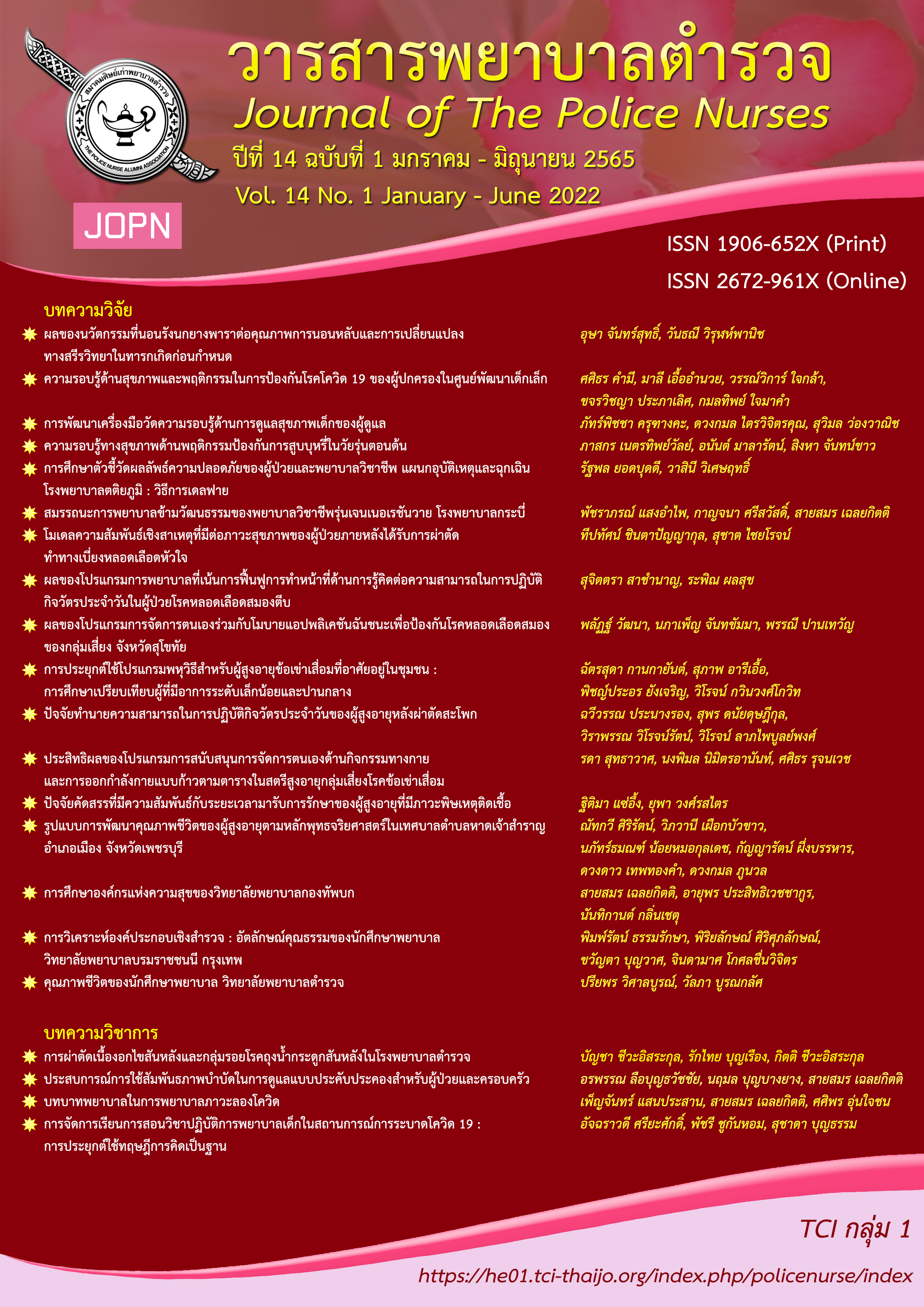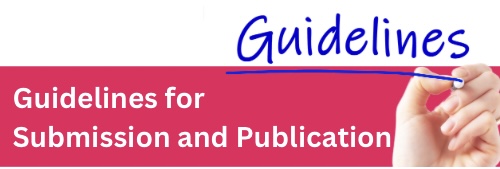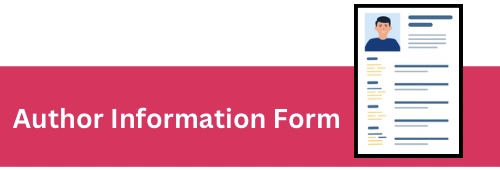NURSING EDUCATION PEDIATRIC NURSING PRACTICUM DURING THE CORONAVIRUS-19 PANDEMIC: APPLICATION OF THINKING-BASED INSTRUCTION THEORY (TBIT)
Keywords:
pediatric nursing, COVID-19, Thinking-BasedAbstract
The Coronavirus-2019 pandemic or Covid-19 has impacted nursing practicum education. Nursing colleges and practical training sites need to follow vigilant measures against the spread of Coronavirus-2019. Therefore, Prachomklao College of Nursing, Phetchaburi province needed to be adjusted and adopted simulation and learning based on Thinking-Based Instruction Theory (TBIT) in place of traditional practice. This article aimed to share experiences of nursing education in pediatric nursing practicum for the third-year nursing students, which was based on five principles as follows: 1) Interest stimulation and motivation using a created circumstance, 2) Cognitive conflict via questioning about an assigned case study, 3) Knowledge-construction using independent inquiry and discussion between instructor and learner, 4) Self-regulation and metacognition via summarizing and reflecting on learning activities, and 5) Application and transfer by using the nursing planning to apply with the patients. Using simulation-based learning based on TBIT helped nursing students gain knowledge, nursing skill, and critical thinking. This method also supported the improvement and raise the effectiveness of nursing education during the COVID-19 pandemic. Few limitations need to be mentioned. Firstly, the standardized patient was not available when the children went to school. Secondarily, the internet signal was delayed when numerous people accessed a database at the same time.
Downloads
References
Bao, L., Kim, Y., Raplinger, A., Han, J., & Koenig, K. (2014). Affective factors in stem learning and scientific inquiry: assessment of cognitive conflict and anxiety. Research in Education Assessment and Learning, 4(1), 1-52
Baanqud, N. S., Al-Samarraie, H., Alzahrani, A. I., & Alfarraj, O. (2020). Engagement in cloud-supported collaborative learning and student knowledge construction: A modeling study. International Journal of Educational Technology in Higher Education, 17, 56.
Chen, W., Tan, J. S. H., & Pi, Z. (2021). The spiral model of collaborative knowledge improvement: An exploratory study of a networked collaborative classroom. International Journal of Computer-Supported Collaborative Learning, 16, 7–35.
Eisenkopf, G. (2010). Peer effects, motivation, and learning. Economics of Education Review, 29(3), 364-374.
Hu, W., & Wei, Y. (2010). Thinking structure and classroom teaching - the guidance of intelligence theory centered on thinking structure to classroom teaching. Curriculum, Textbooks, Teaching Methods, 30, 32–37.
Hu, W., Adey, P., Jia, X., Liu, J., Zhang, L., Li, J., & Dong, X. (2011). Effects of a ‘Learn to Think’ intervention programme on primary school students. British Journal of Educational Psychology, 81(4), 531-557.
Hu, W., Jia, X., Plucker, J. A., & Shan, X. (2016). Effects of a critical thinking skills program on the learning motivation of primary school students. Roeper Review, 38(2), 70-83.
Iswahyudi, I., Yohana, C., & Mardi, M. (2019). Impact self-efficacy and supervisor support on transfer of training: Two-stage approach analysis. Jurnal Pendidikan Ekonomi Dan Bisnis (JPEB), 7(1), 47-60.
Jang, Y., Lee, H., Kim, Y., & Min, K. (2020). The relationship between metacognitive ability and metacognitive accuracy. Metacognition and Learning, 15(3), 411–434.
Kang, H., Scharmann, L. C., Kang, S., & Noh, T. (2010). Faculty publications: Department of teaching, learning and teacher education. International Journal of Environmental & Science Education (IJESE), 5, 383–405.
Lee, C. S., Hayes, K. N., Seitz, J., DiStefano, R., & O’Connor, D. (2016). Understanding motivational structures that differentially predict engagement and achievement in middle school science. International Journal of Science Education, 38(2), 192–215.
Li, Y., Zhang, X., Dai, D.Y. & Hu,W, (2021 ). Curriculum Innovation in times of the COVID-19 pandemic: The thinking-based instruction theory and its application. Frontiers in Psychology, 12, 1-18.
Lin, C., & Hu, W. (2010). Theory and practice of thinking type of classroom teaching. Journal of Beijing Normal University (Social Sciences), 1, 29–36.
O’Donnell, J. M., Decker, S., Howard, V., Levett-Jones, T., & Miller, C. W. (2014). NLN/Jeffries simulation framework state of science project: Simulation learning outcomes. Clinical Simulation in Nursing, 10(7), 373-382.
Salta, K., & Koulougliotis, D. (2020). Domain specificity of motivation: Chemistry and physics learning among undergraduate students of three academic majors. International Journal of Science Education, 42(2), 253–270.
Schunk, D. H., Meece, J. L., & Pintrich, P. R. (2014). Motivation in education: Theory, research, and applications (4th ed.). Boston, MA: Pearson Education.
van Lancker, W., & Parolin, Z. (2020). COVID-19, school closures, and child poverty: A social crisis in the making. Lancet Public Health, 5(5), e243–e244.
Wang, X., Li, Y., Li, X., Duan, H., Li, Y., & Hu, W. (2021). Role of avoidance-motivation intensity in creative thinking: Similar and differential effects across creative idea generation and evaluation. Creativity Research Journal, 33(3), 284-301.
Downloads
Published
How to Cite
Issue
Section
License
Copyright (c) 2022 JOURNAL OF THE POLICE NURSES

This work is licensed under a Creative Commons Attribution-NonCommercial-NoDerivatives 4.0 International License.
ผลงานที่ได้ตีพิมพ์แล้วจะเป็นลิขสิทธิ์ของวารสารพยาบาลตำรวจ















